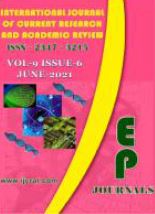Abstract Volume:9 Issue-6 Year-2021 Original Research Articles
 |
Online ISSN : 2347 - 3215 Issues : 12 per year Publisher : Excellent Publishers Email : editorijcret@gmail.com |
Bread wheat plays a major role among the few crop species being extensively grown as staple food sources. The historical background of wheat breeding in Ethiopia is briefly reviewed, with due emphasis on varieties released to date. Further, most of the varieties released were either from introduction and/or selection programs; however, the strengthening of the molecular marker assisted selection program is imperative in order to produce varieties which are better suited to changing climatic conditions. Most Wheat improvement is a complicated trait which is controlled by polygenes and their expressions are influenced by various environmental elements. This means that breeding for this trait is so difficult and new molecular methods such as molecular markers, quantitative trait loci (QTL) mapping strategies, and expression patterns of genes should be applied to produce improved wheat genotypes. About one hundred ten (110) improved wheat varieties with various desirable characteristics were released for the four major agro ecologies of Ethiopia. However, wheat breeding in Ethiopia still not advanced using the existing genetically diverse wheat resource. Particularly, application of Biotechnology in crop improvement is limited; hence further crop improvement using advanced breeding technology to be considered accordingly.
How to cite this article:
Afework Legesse and Admikew Getaneh. 2021. Wheat Breeding Research and Major Achievements in Ethiopia: A Review.Int.J.Curr.Res.Aca.Rev. 9(6): 17-27doi: https://doi.org/10.20546/ijcrar.2021.906.004



Quick Navigation
- Print Article
- Full Text PDF
- How to Cite this Article
- on Google
- on Google Scholor
- Citation Alert By Google Scholar
